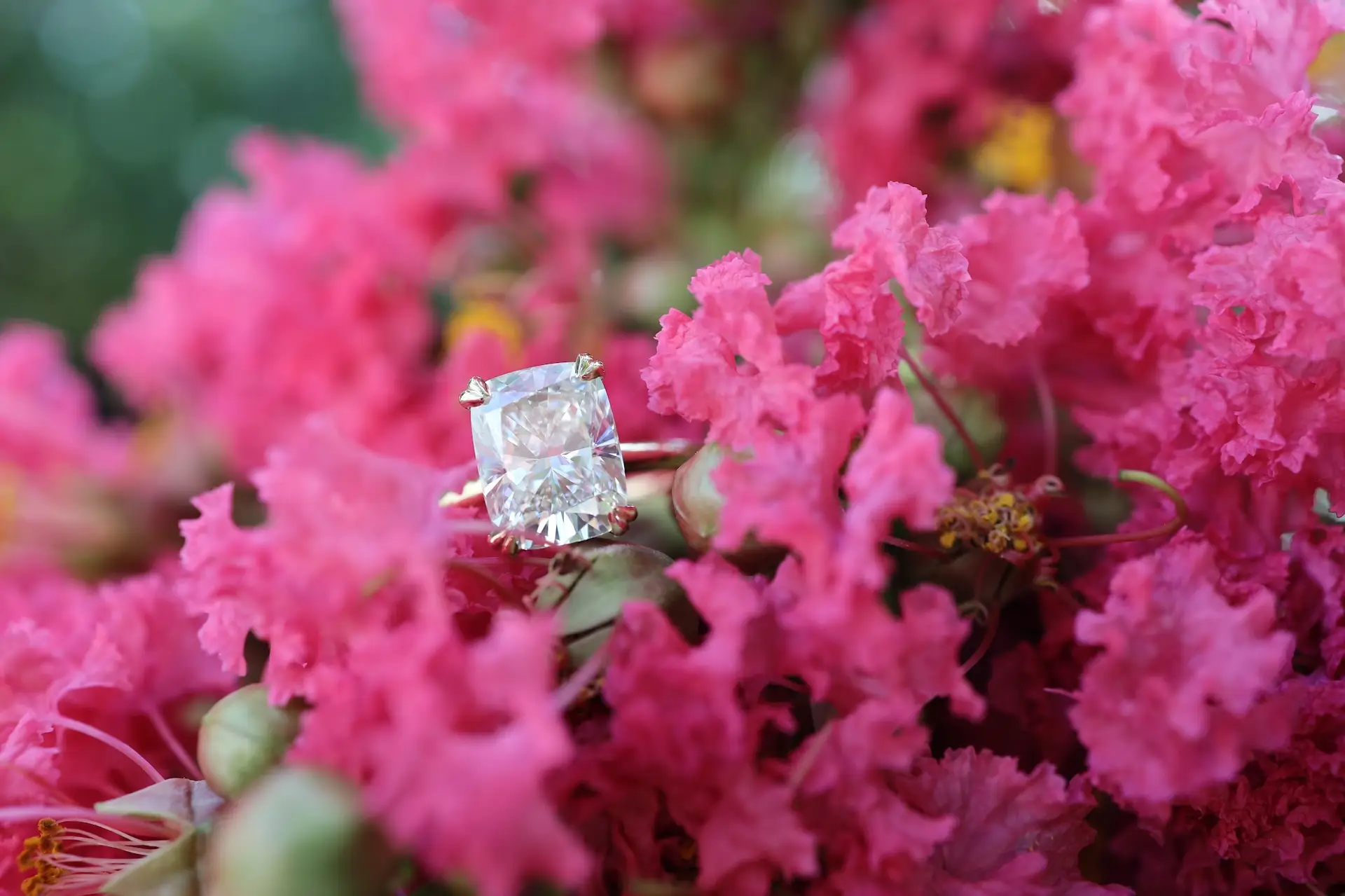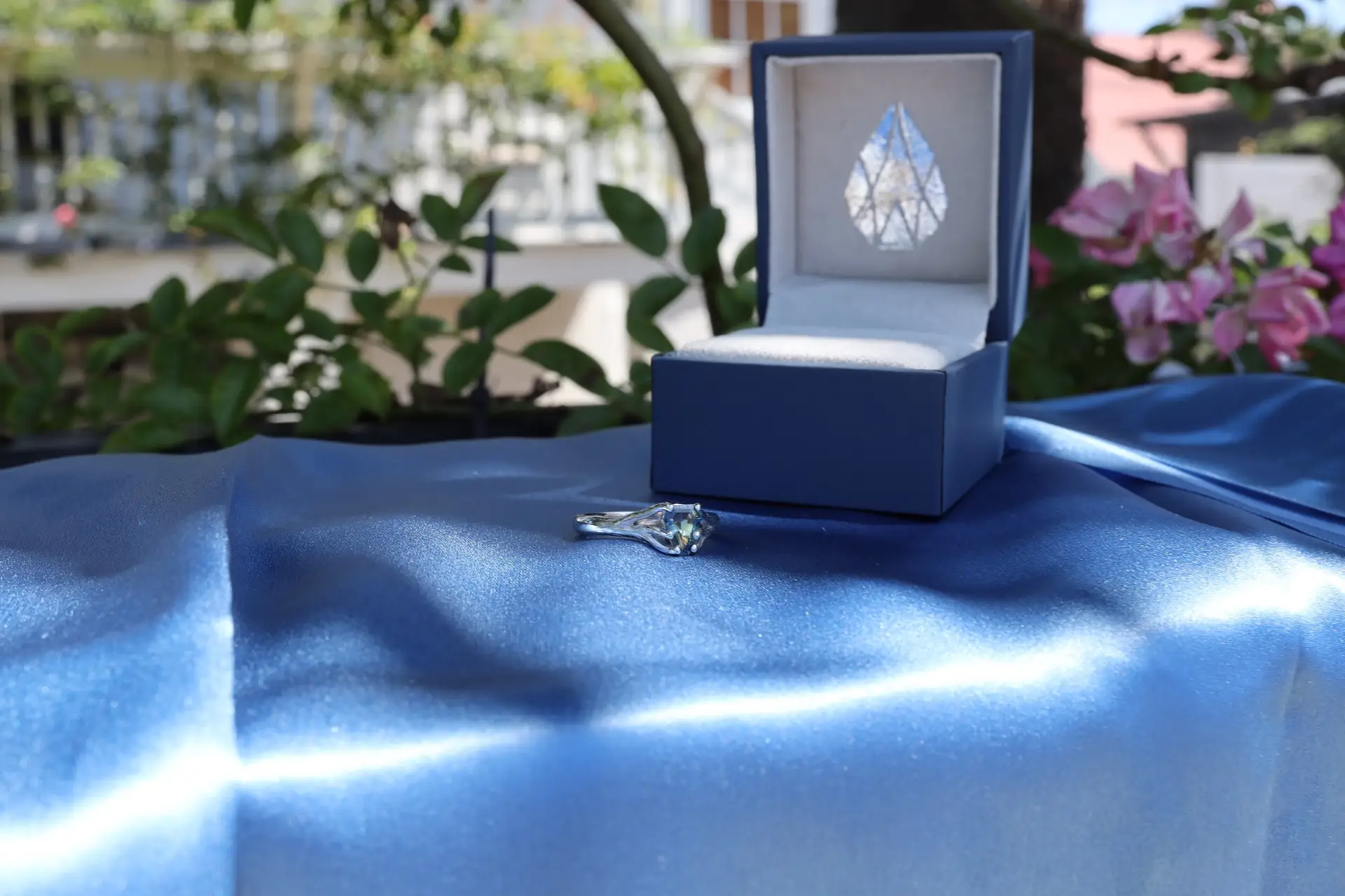The Mohs hardness scale is an important resource to consider when choosing jewelry with gemstones. Whether it’s a ring, necklace, earrings, or a bracelet, the Mohs Scale will tell you how ‘hard’ a gemstone is. Many people have heard about the Mohs scale, but few know exactly what it is.
What is the Mohs Scale?
The Mohs scale was created by Friedrich Mohs in 1812. The mineral scale of hardness lists ten reference minerals that range from 1-10 in hardness ratings. Diamond is the hardest mineral in the world, residing at a 10 on the Mohs scale.

The hardness of a mineral equates to its resistance to scratch, not its overall durability. Hardness, tenacity, and stability all contribute to a mineral’s durability and wearability. The Mohs scale tells us how ‘hard’ a gemstone is, meaning how resistant it is to scratching. It has been used for over 200 years and remains to be one of the first tests used to help identify minerals.
What the Mohs Scale Means For Fine Jewelry
The Mohs scale is useful and can give you an idea of how different gemstones hold up to daily wear. Even if you take good care of your jewelry while wearing it, you can’t control its exposure to dust and dirt particles in the air. Dirt also contains quartz particles in addition to other mineral particles. Quartz minerals rate a 6 on the Mohs scale meaning that even dirt and dust can scratch many gemstones.
It is recommended to wear gemstones that are above 6 on the Mohs scale for daily wear. However, the piece of jewelry you’ve chosen and its setting can reduce the vulnerability of softer gemstones.
For engagement rings and bracelets worn regularly, it is best to choose harder minerals such as diamonds, sapphires, & rubies. Ruby and sapphire rate a 9 on the Mohs scale, while diamonds rate at 10. Jewelry created with these gemstones are best suited for daily wear. An engagement ring for example is worn practically everyday for a lifetime, and you’ll want it to stand up to this daily wear.
Keep in mind that the Mohs scale is not a linear scale. Ruby and sapphire are rated just one number below a diamond, but a diamond is many times harder than a sapphire. Sapphire and ruby will hold up well to scratching for years, as long as it’s well taken care of. But if not taken care of, even these can scratch over time. As a side note, many gems can be repolished if they become scratched.
Wearing Softer Gemstones on the Mohs Scale
That doesn’t mean you can’t wear softer gemstones in your jewelry. Pearls are a popular gemstone but rate a 2.5-4.5 on the Mohs scale. Pearls are easily scratched, but can still be worn with extra care and the right type of setting. The same goes for opals, which rate a 5.5-6.5.
If you’re going to wear a ring with a softer gemstone, you might not want to wear it everyday, Alternatively, you can opt for a different setting, like earrings or necklaces. Jewelry worn on the hands is more susceptible to damage than necklaces or earrings. With pearls and opals being rounder than other gemstones, they are also more likely to become damaged when worn in rings.
It’s possible to wear a soft gemstone everyday with minimal damage, but it’s very hard to do. Those who choose opal engagement rings often need to replace the opal because they become damaged. If you’ve spent a lot of money on a soft gemstone, it might be difficult to replace.

That is one of the main reasons why diamonds are recommended for engagement rings. While they don’t have the highest tenacity, the hardness rating of 10 makes them resist dust and dirt indefinitely. They will sparkle and shine for years and years without any clouding. The same is true for fancy colored diamonds. Colored diamonds offer a splash of color for the wearer while retaining the same hardness as colorless diamonds.
Take Care of Softer Gemstones on the Mohs Scale
There are many jewelry cleaning machines on the market including ultrasonic cleaners, steam cleaners, and a variety of chemical solutions. While diamonds and sapphires generally stand up to all of these, there’s a variety of softer gemstones that don’t.
For that reason, we recommend a simpler and less expensive way of cleaning all your jewelry. You should use a lint-free cloth, such as a microfiber cloth, and gently wipe away dirt. If needed, dampen the cloth with a mixture of lukewarm water and mild soap and clean away any stubborn dirt. Gently dry your gemstone piece, ensuring the jewelry is completely dry. Leaving moisture in some gems can damage them. But please note that select gems are sensitive even to water and soap.
Make sure to store jewelry separately. If you store your collection in a jewelry box, make sure pieces are not stored loosely or together. Softer gemstones can be scratched by harder gemstone jewelry. Each piece should have a proper spot. This also keeps the metals from scratching against each other, preventing additional damage.
Keeping the Mohs Scale in Mind When Choosing Custom Jewelry
When creating custom jewelry, you should consider the Mohs scale when deciding what stones will go in your piece. It shouldn’t be the only factor, but you’ll want to minimize future replacement costs when choosing softer gemstones.
At AW Jewelry, we are happy to assist you with the creation of a beautiful custom engagement ring or any custom piece of jewelry. Our expert designers can help you determine the best gemstones and setting for your one-of-kind custom jewelry. Contact us today to start creating with AW Jewelry.



